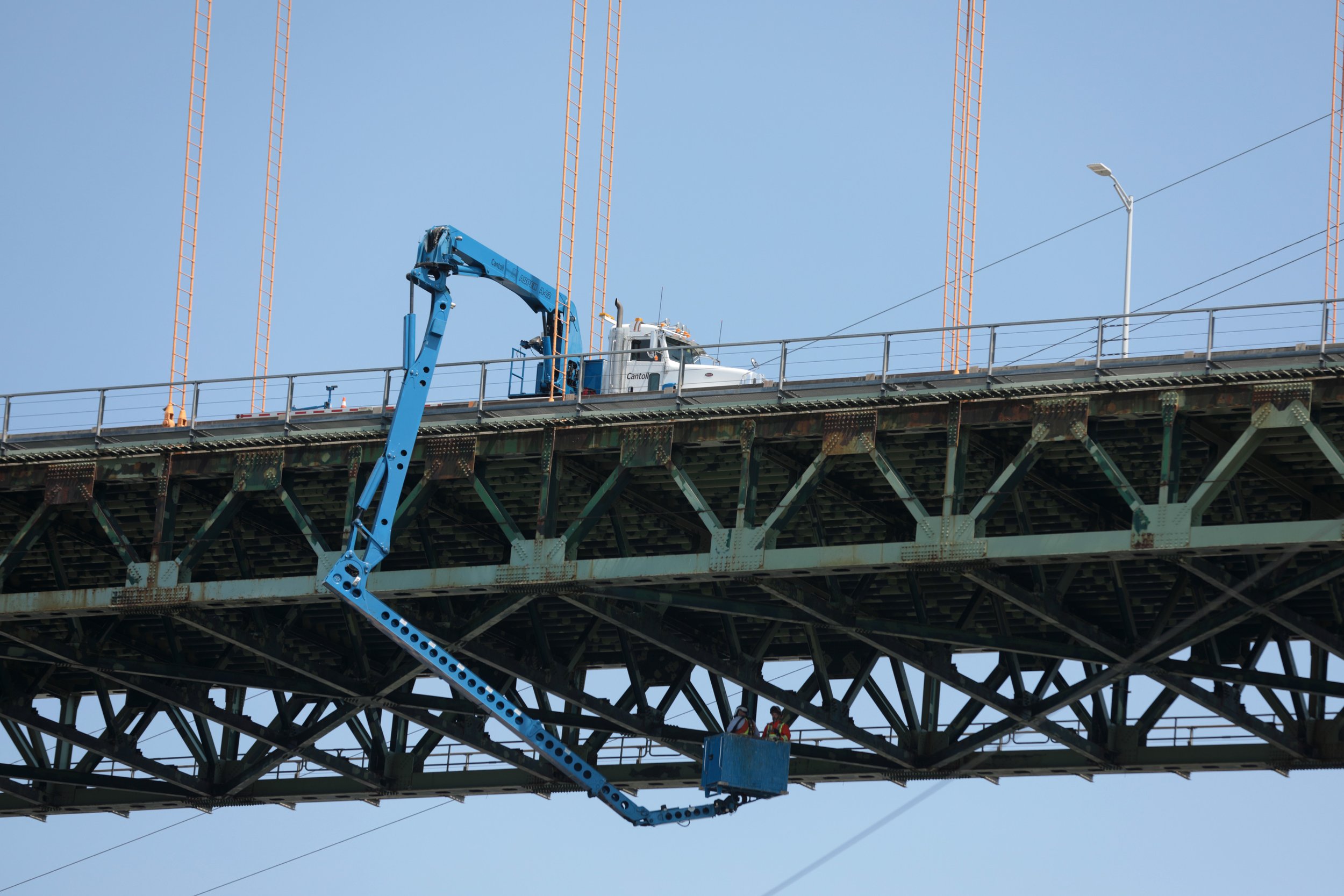
Driving Towards the Future
Halifax Harbour Bridges (HHB) is on the cusp of great change.
In our boardrooms and offices, plans are being meticulously crafted and strategies rigorously honed to provide safer, more efficient cross-harbour transportation.
While the 100,000 drivers that cross our bridges each weekday may not feel the impact for a while longer, efforts are underway to bring three significant projects to fruition: e-Tolling, the rehabilitation or replacement of the MacKay Bridge, and the execution of essential maintenance projects that preserve the integrity of the existing bridge structures.
e-Tolling
Electronic tolling has become the standard across North America in recent years, and HHB has been studying implementing its own electronic tolling options since 2017. HHB expects payments for crossing both bridges to shift exclusively to electronic tolls in the next few years.
e-Tolling will eliminate toll booths and prompt the reconfiguration of the roadways leading to both bridges to ensure the flow of traffic is uninhibited. The result will be quicker, safer, and more seamless travel.
The precise details of how the system will work are still being scrutinized, but HHB has invested significantly in IT resources, as well as a new customer service platform, to ensure our systems will be compatible with the e-Tolling solution that is selected.
The future of the MacKay Bridge
When the “new” bridge was constructed in the 1970s, it was built to accommodate a surge in industrial growth and help relieve traffic pressure on the Macdonald Bridge. New, specialized technology allowed the bridge to be built faster and “lighter.”
That was fine at the time, but as the years rolled by, increased traffic volumes and heavier-than-projected freight traffic have taken a toll on the infrastructure. To continue safely accommodating millions of annual crossings, HHB will need to continue to invest significantly in maintenance and repairs. That essential work will also require increasingly frequent closures.
Pre-pandemic, consultants recommended a number of options for the future of the MacKay. HHB has been looking at those options in detail, consulting with government, stakeholders and bridge experts to develop a plan that will either extend the life of the MacKay Bridge, or recommend the construction of a new bridge to cross the harbour.
This implications are massive, and HHB is doing its due diligence to get it right.
Capital plan and maintenance
When you buy a new car, very little maintenance is required. You change the oil, rotate the tires, and the amount of time it spends in the shop is minimal. As the car ages, though, parts wear out and need to be replaced. The more kilometres you put on the car, the more likely it is to spend an increasing amount of time in the shop. The maintenance cycle for bridges is much the same.
After the Macdonald Bridge opened in 1955, the first few decades breezed by with very few issues. By the turn of the century, however, the structure required increased attention. A significant project in 1999 transformed the Macdonald from a two-lane to a three-lane bridge. Fifteen years later, HHB launched the Big Lift, an unprecedented, multi-year rebuild that saw the entire suspended span, including the road deck, floor beams, stiffening trusses and suspender ropes replaced - all while keeping the bridge open to traffic during the week.
The $205 million project extended the life of the key suspended span at the centre of the bridge for another 75 years, but work is continuing on approach spans, including items like the replacement bearings critical to the movement of the bridge that haven’t been replaced since 1955. As you can read elsewhere in this report (link) steel and paint work is critical too and runs into millions of dollars.
Whether it’s paving, inspections, main cable dehumidification efforts, concrete pier repairs, e-Tolling prep, or efforts to extend the life of the MacKay Bridge, the HHB team is driving hard toward a future that will offer bridge users an even safer more reliable crossing.
